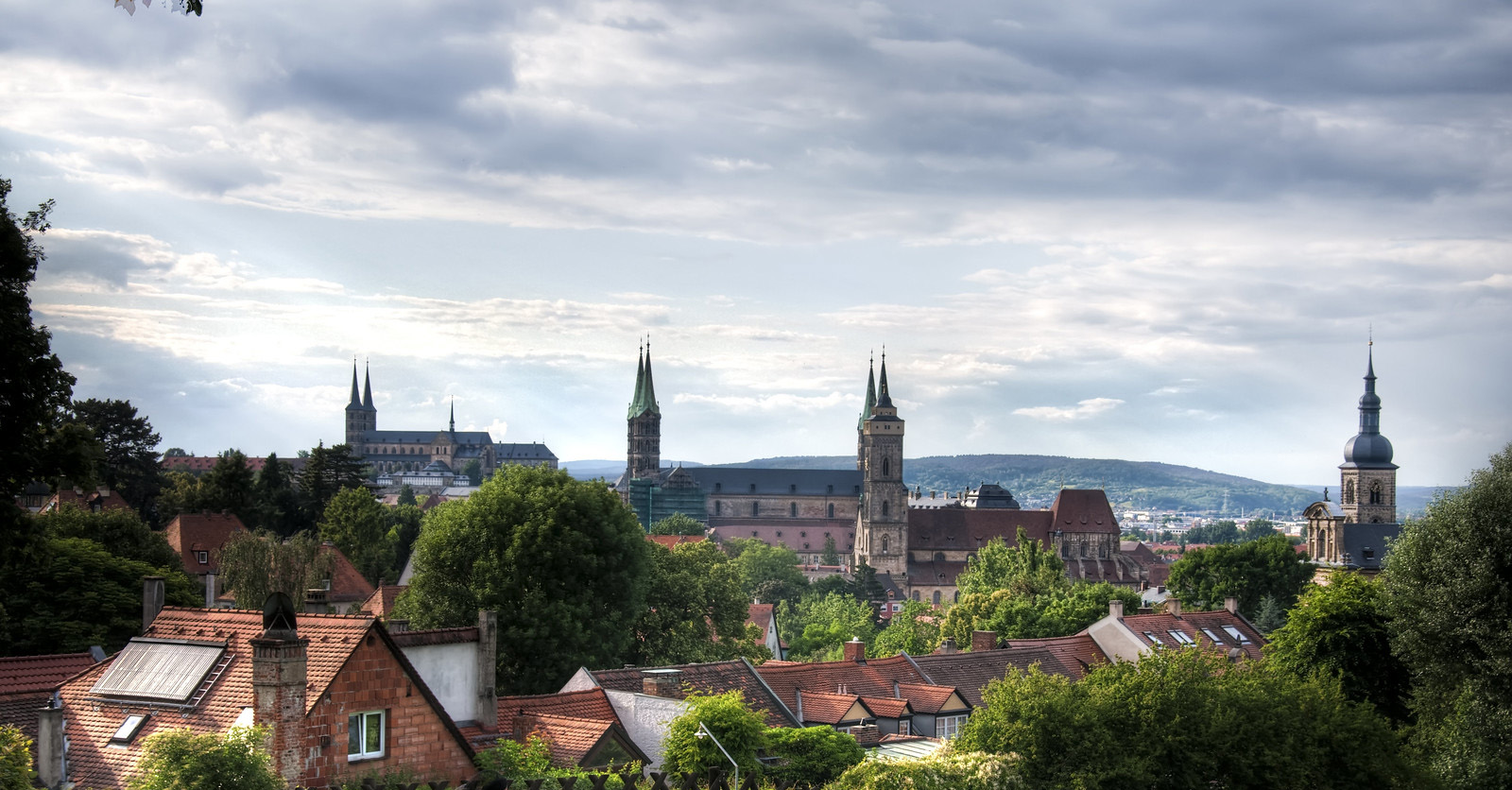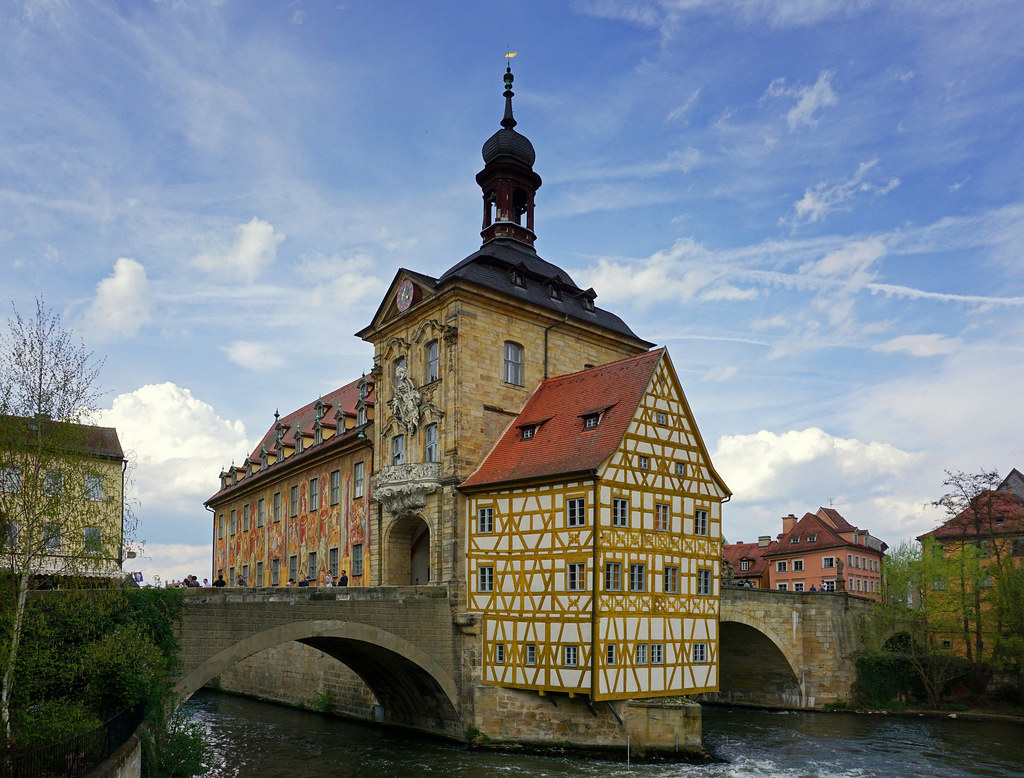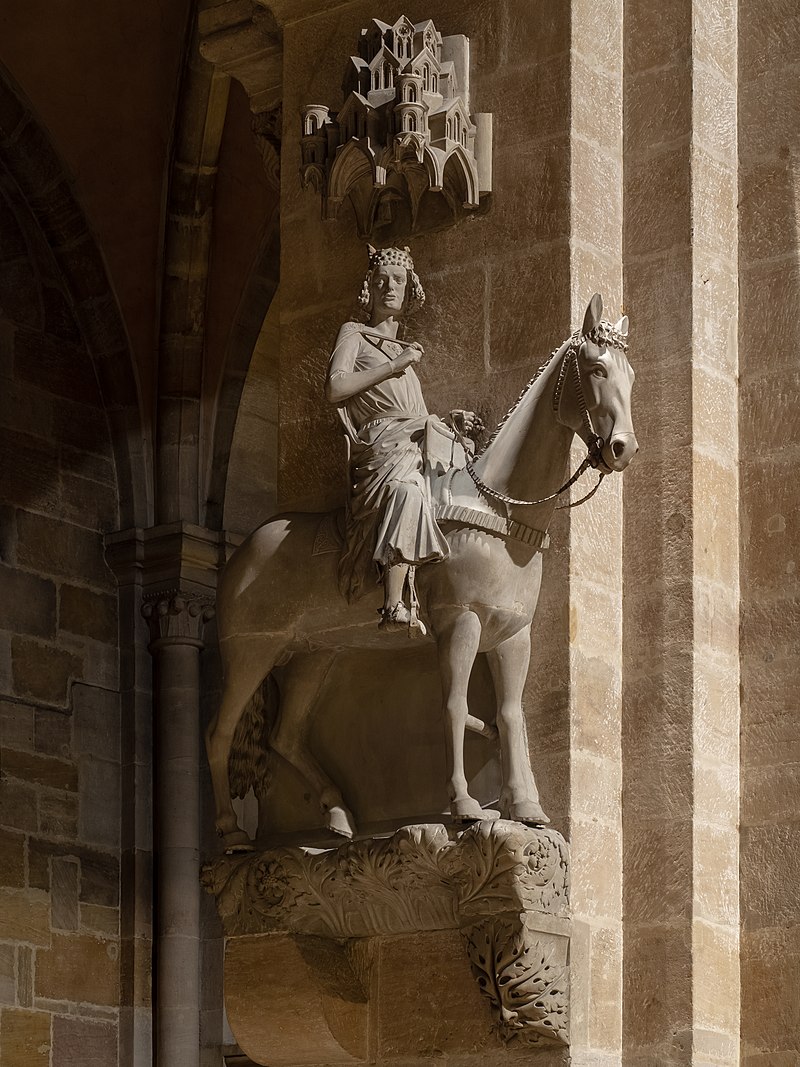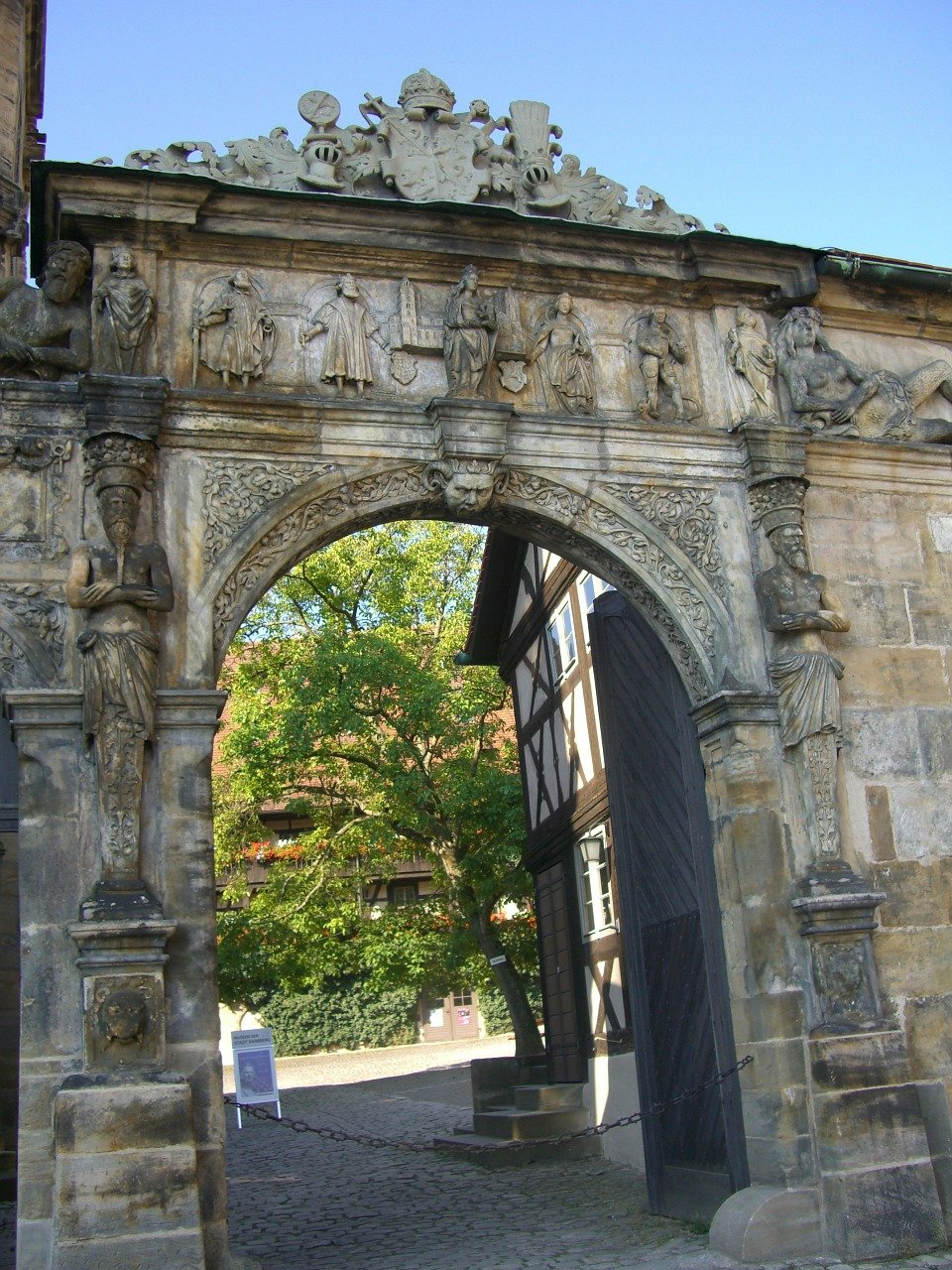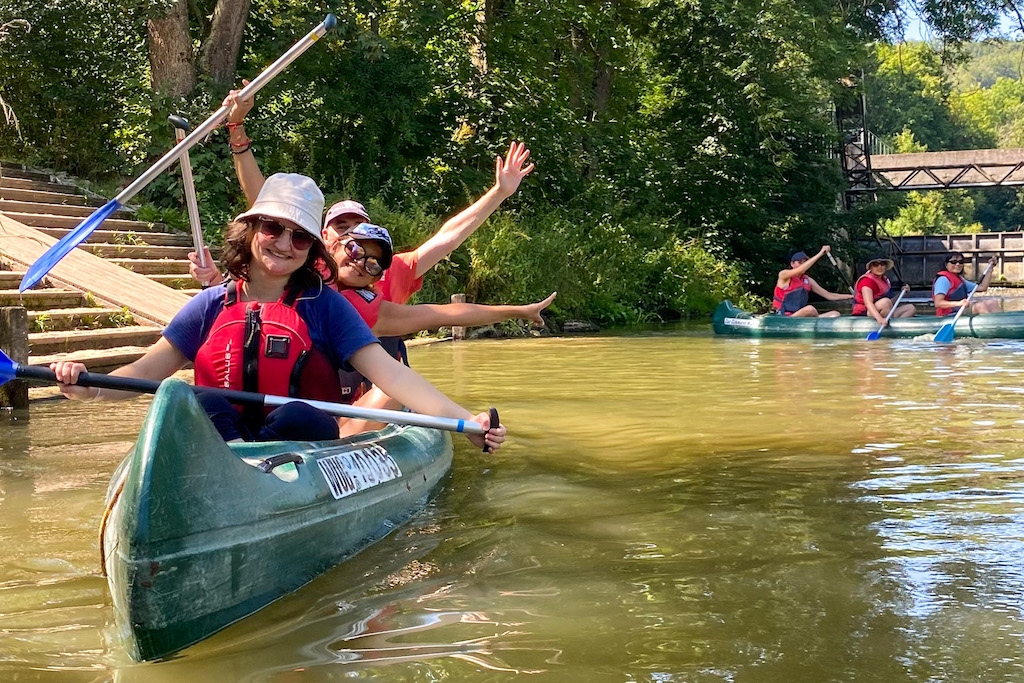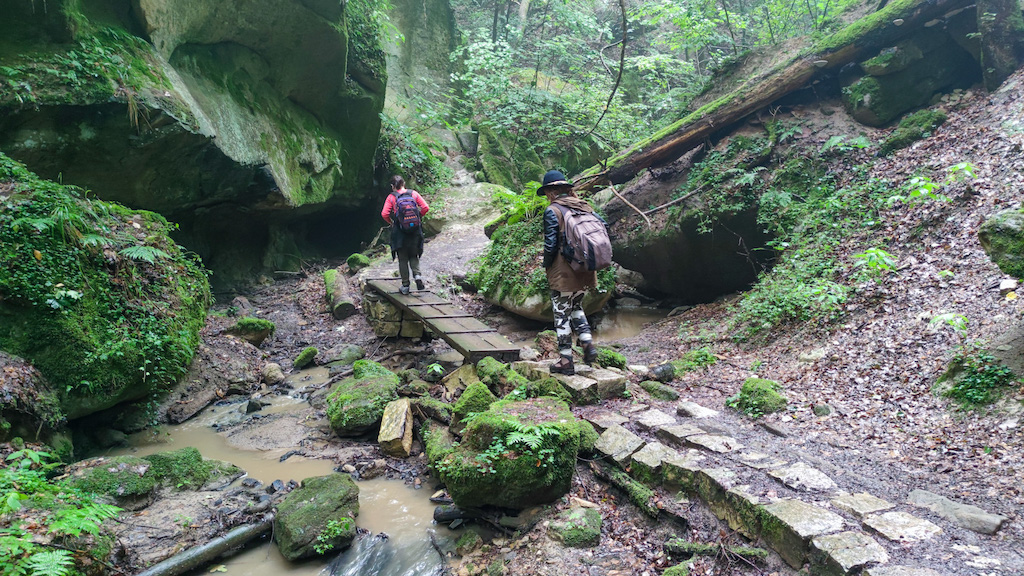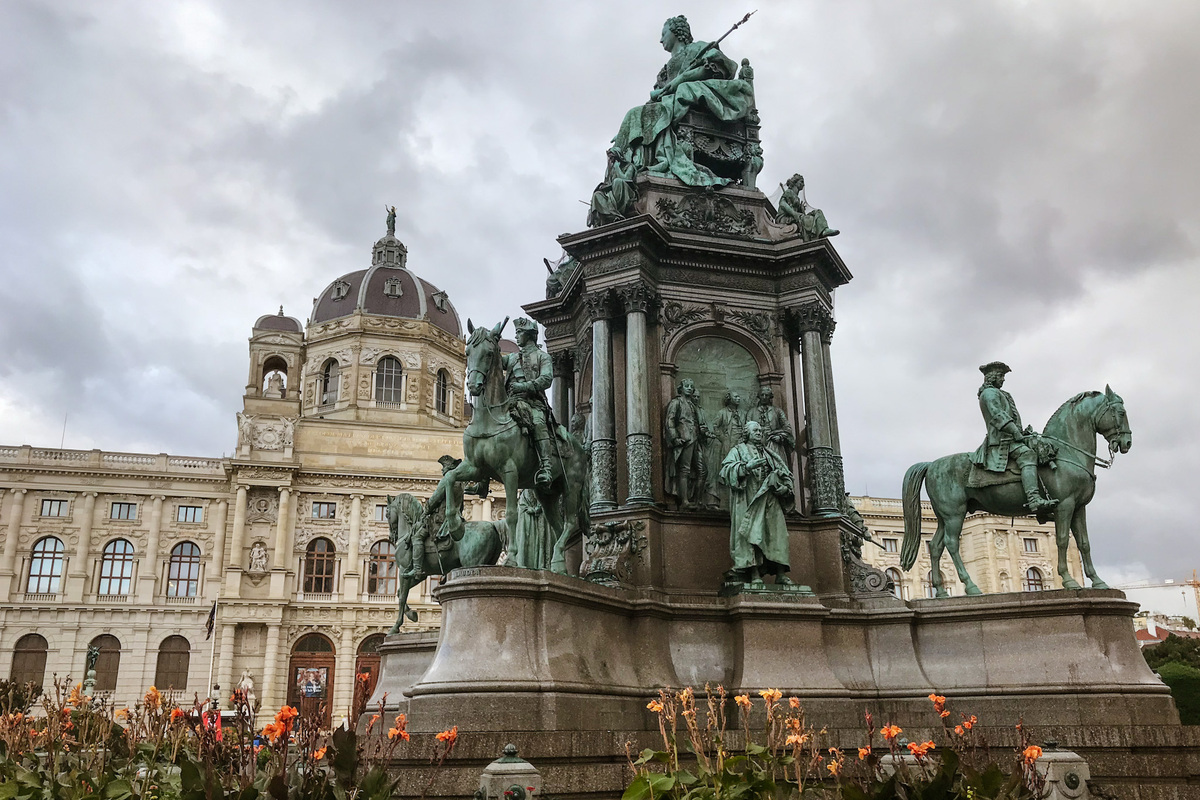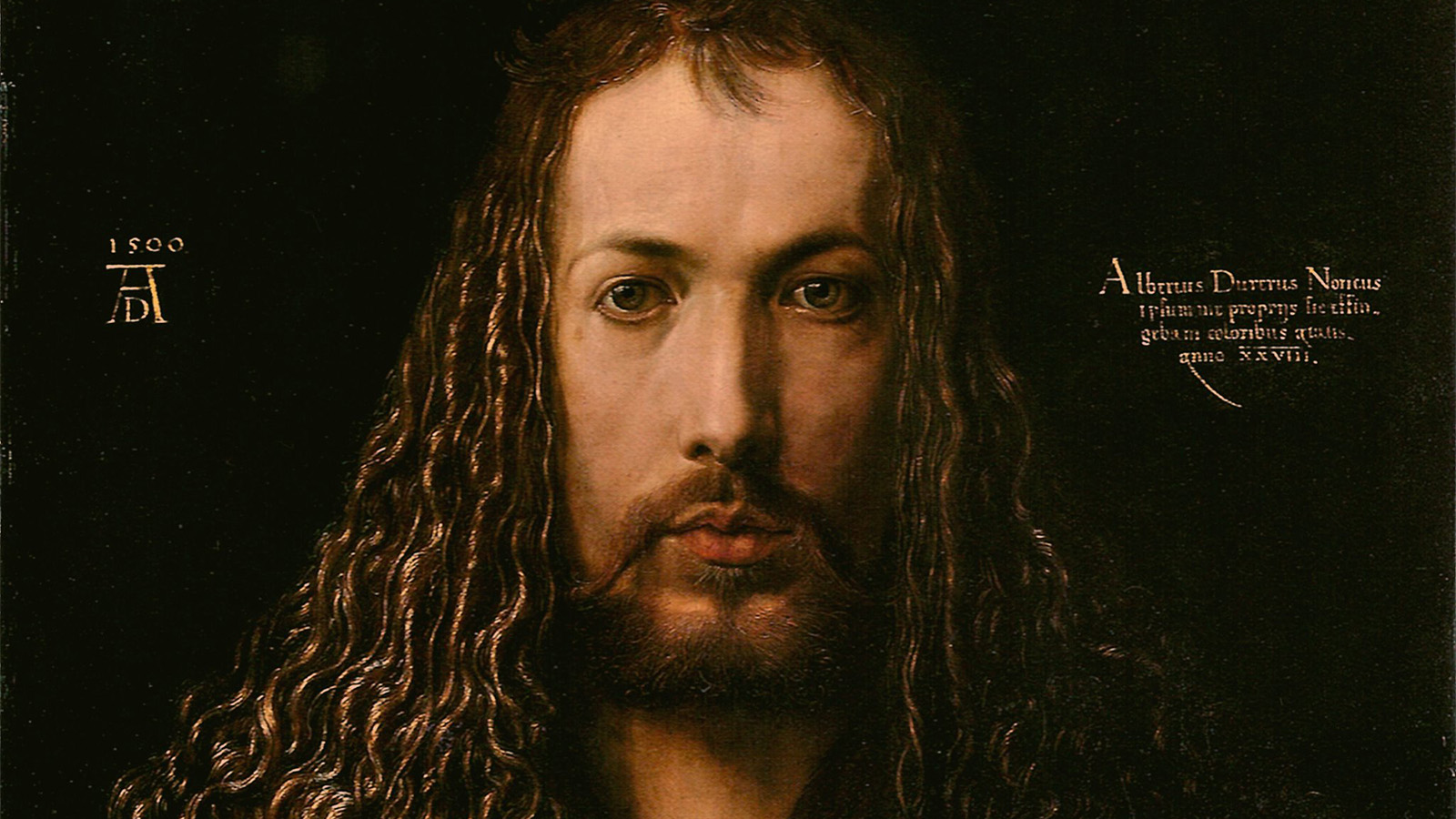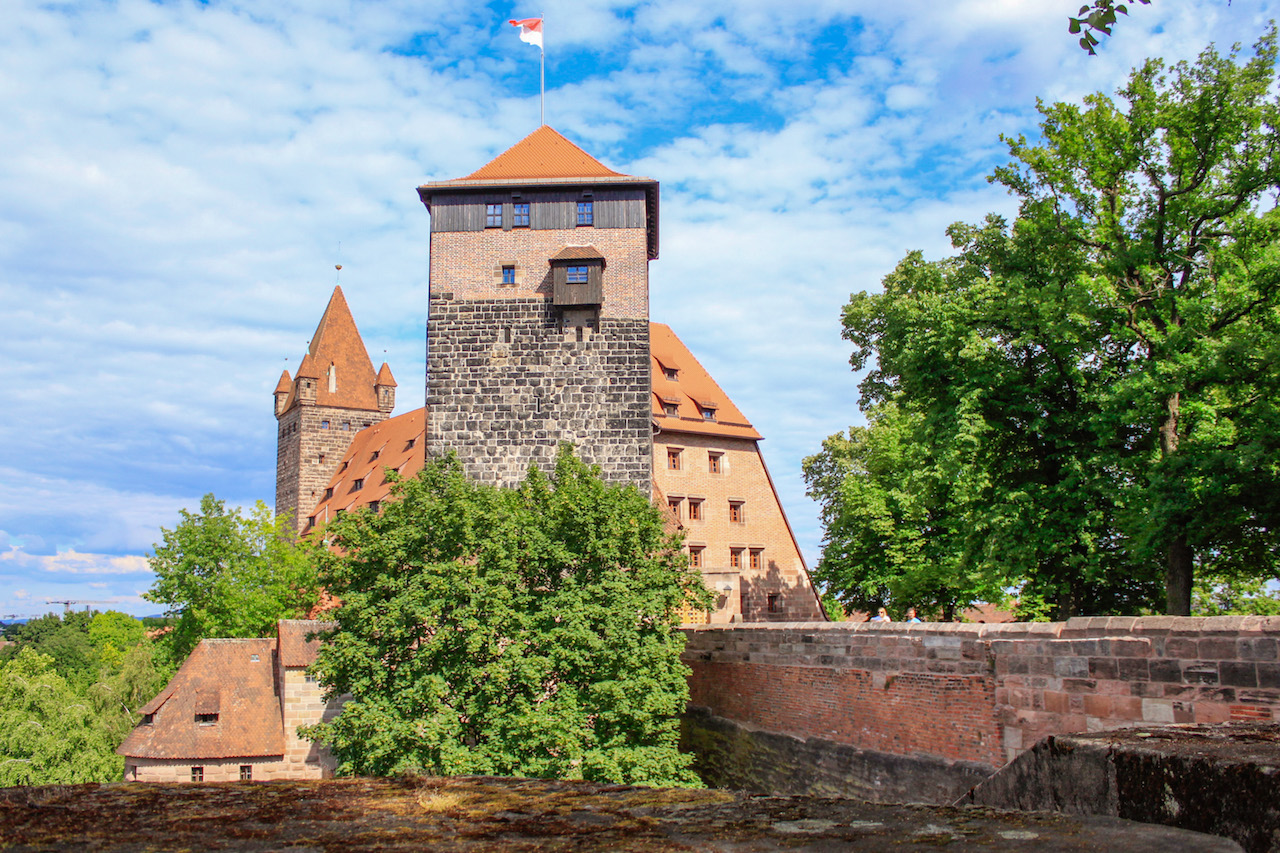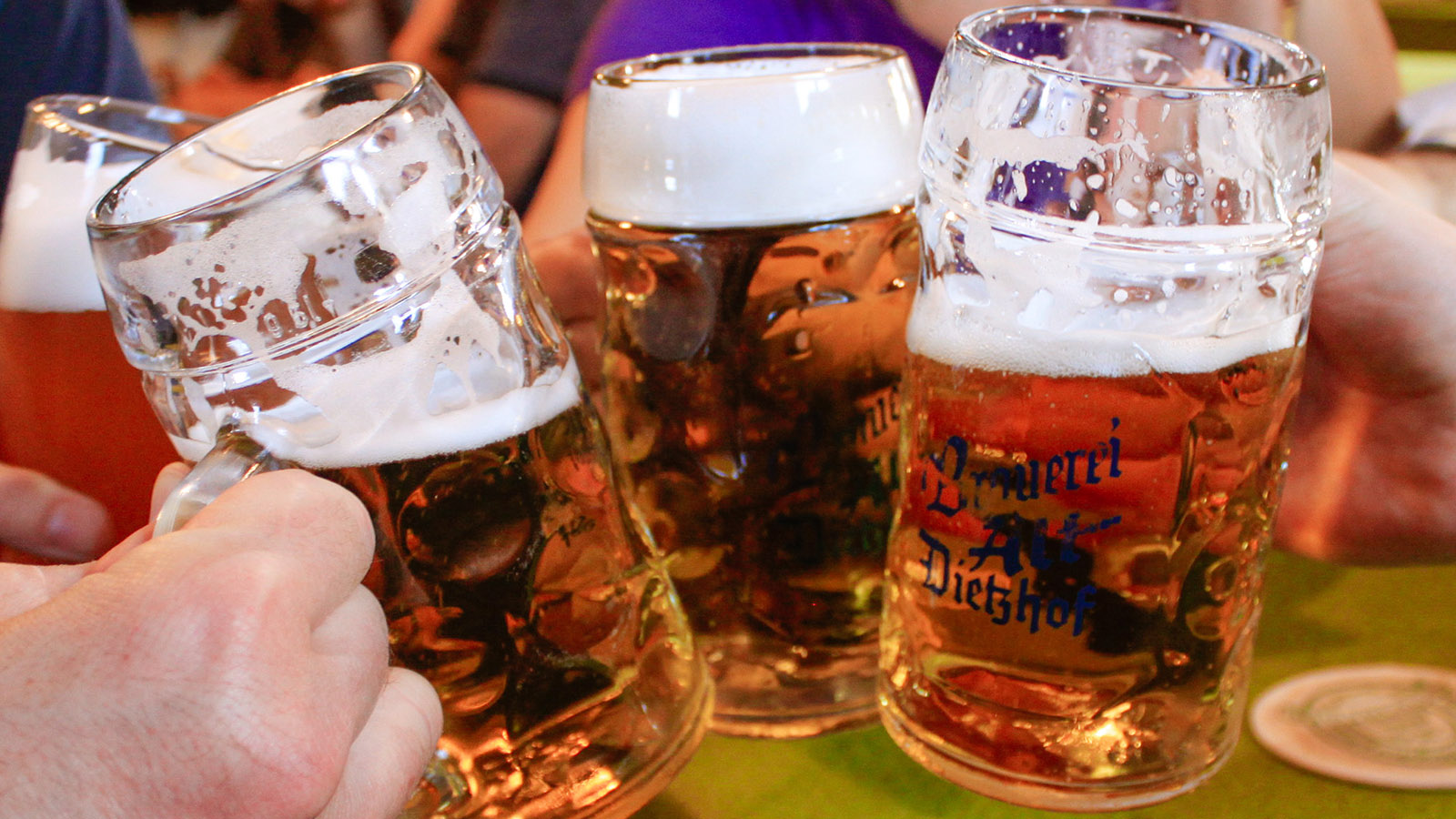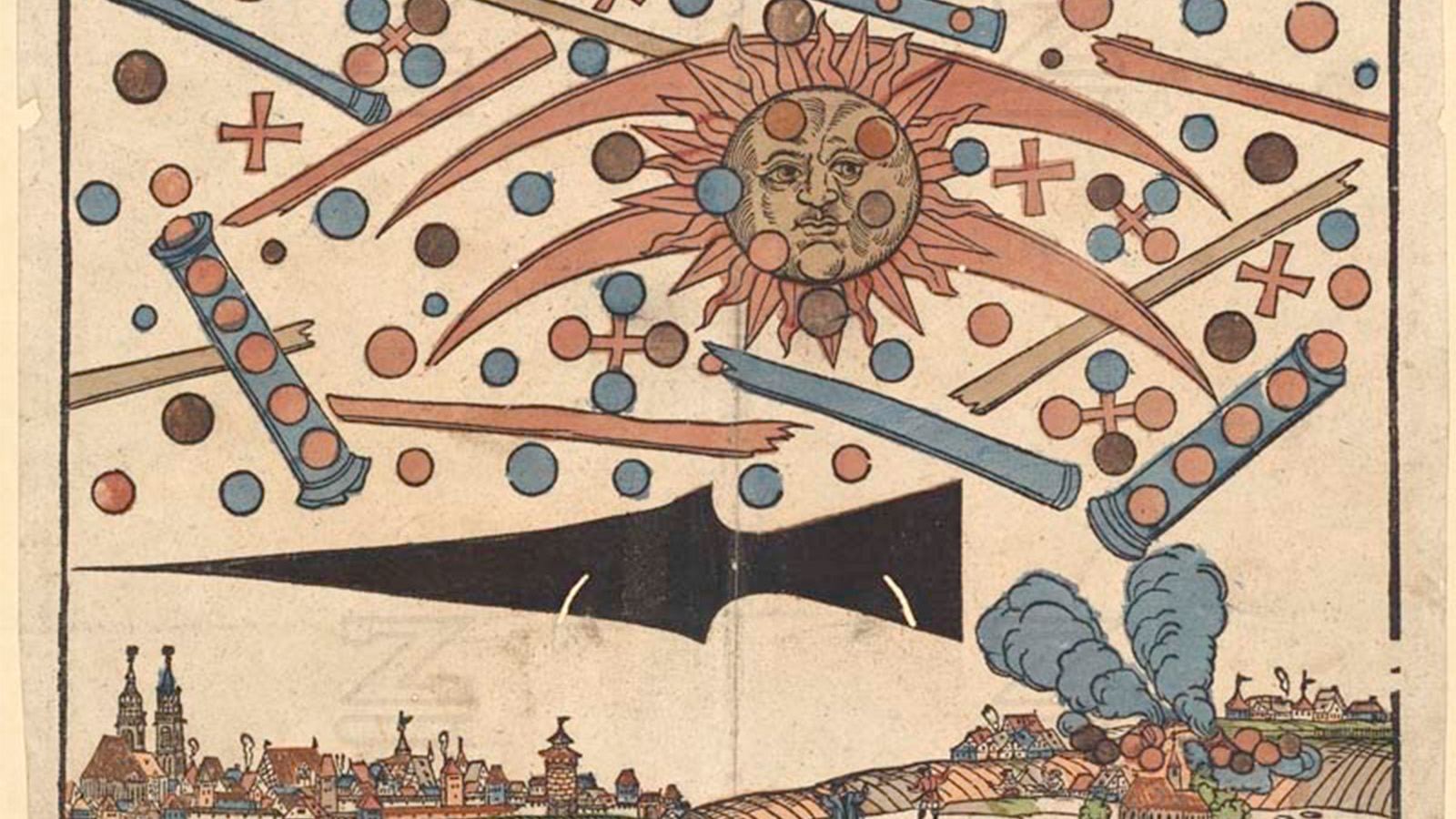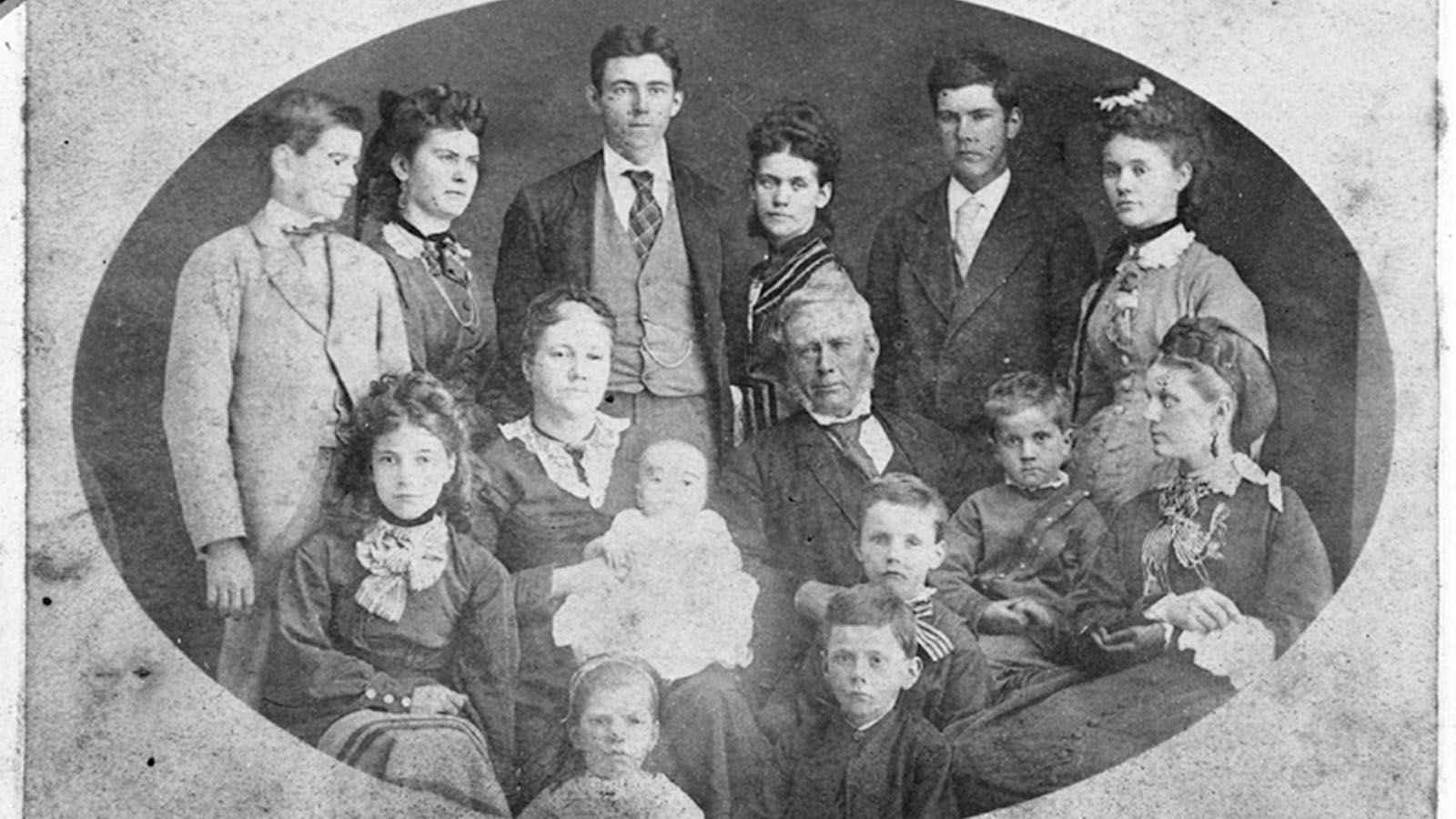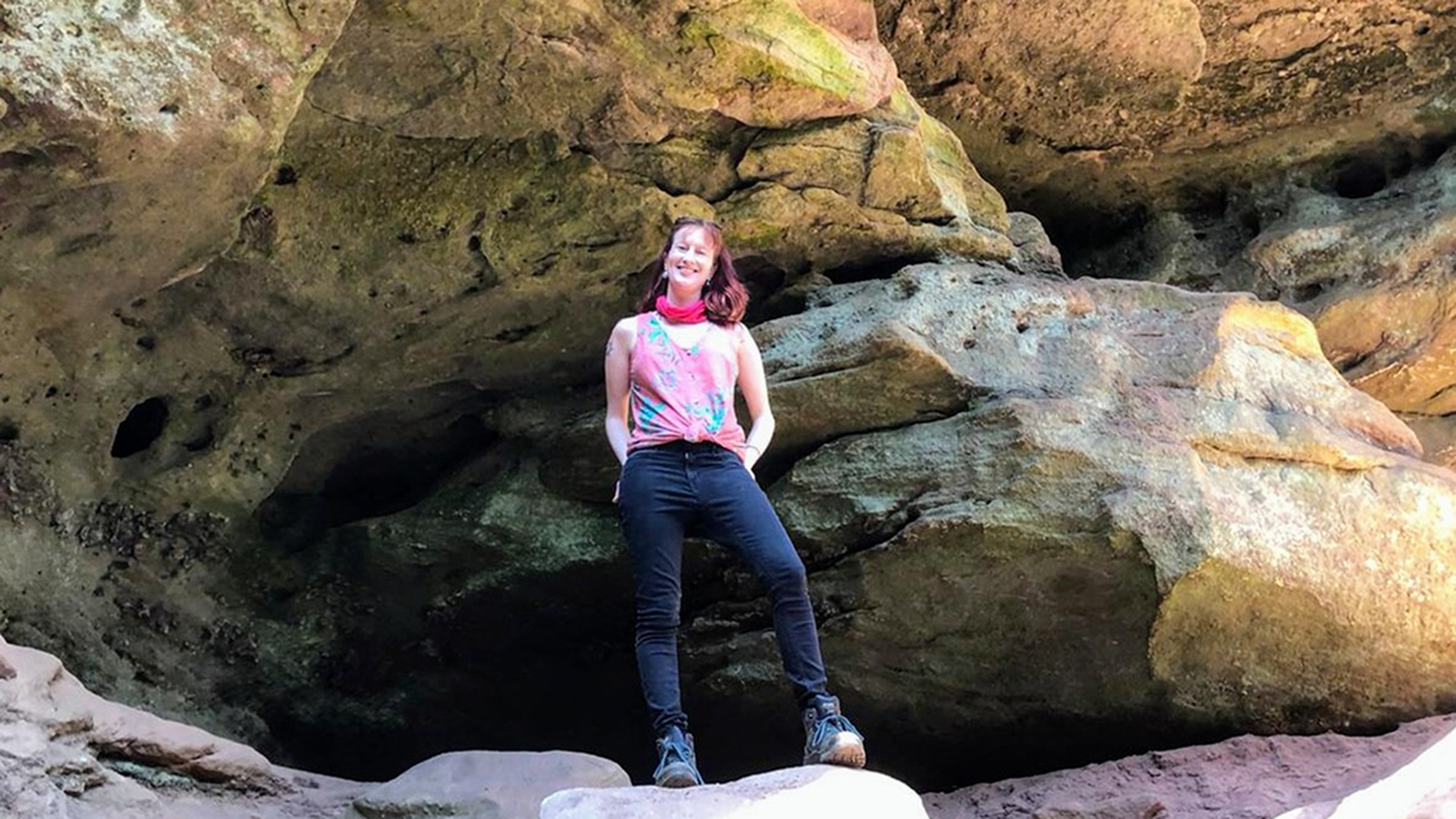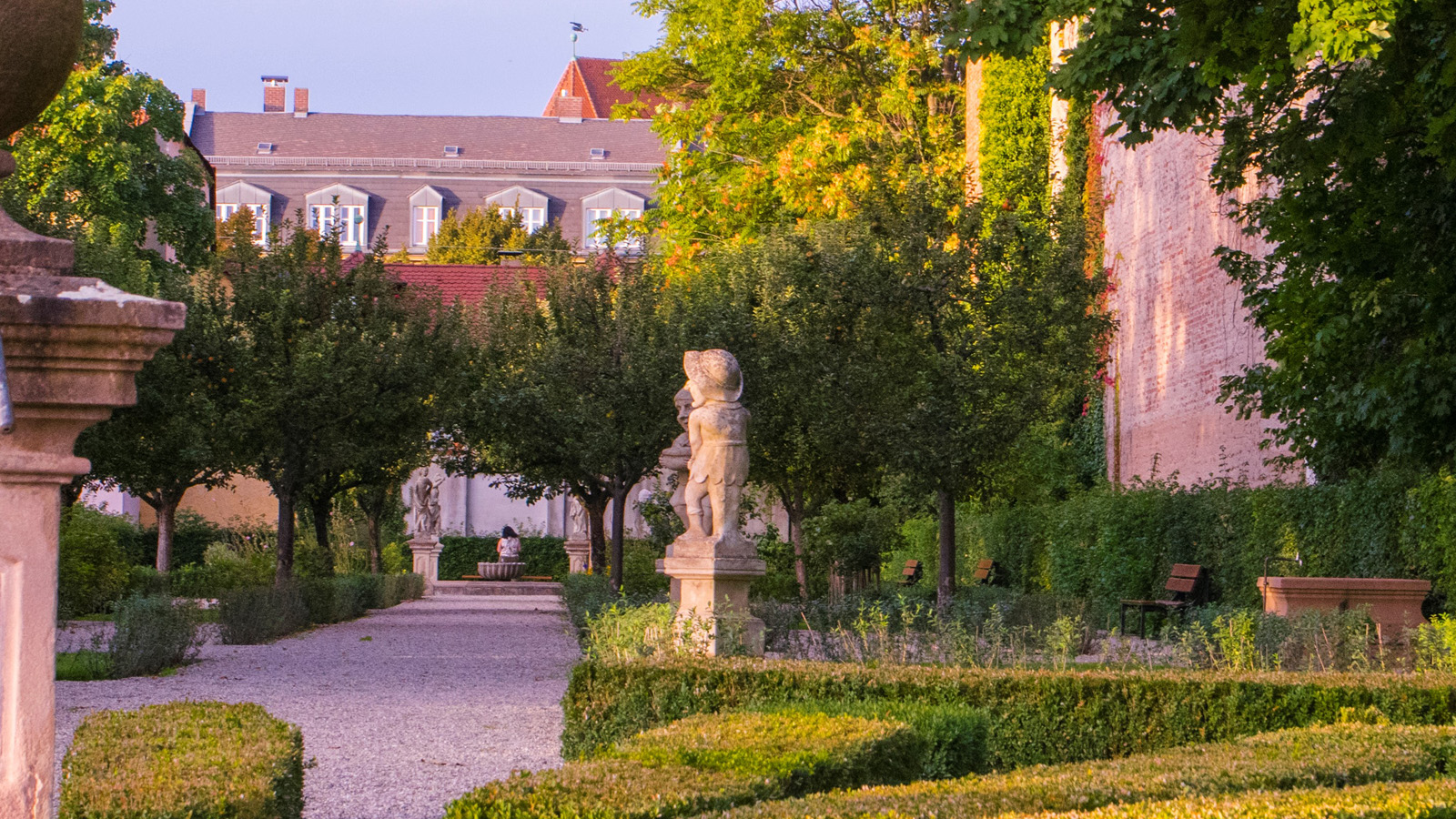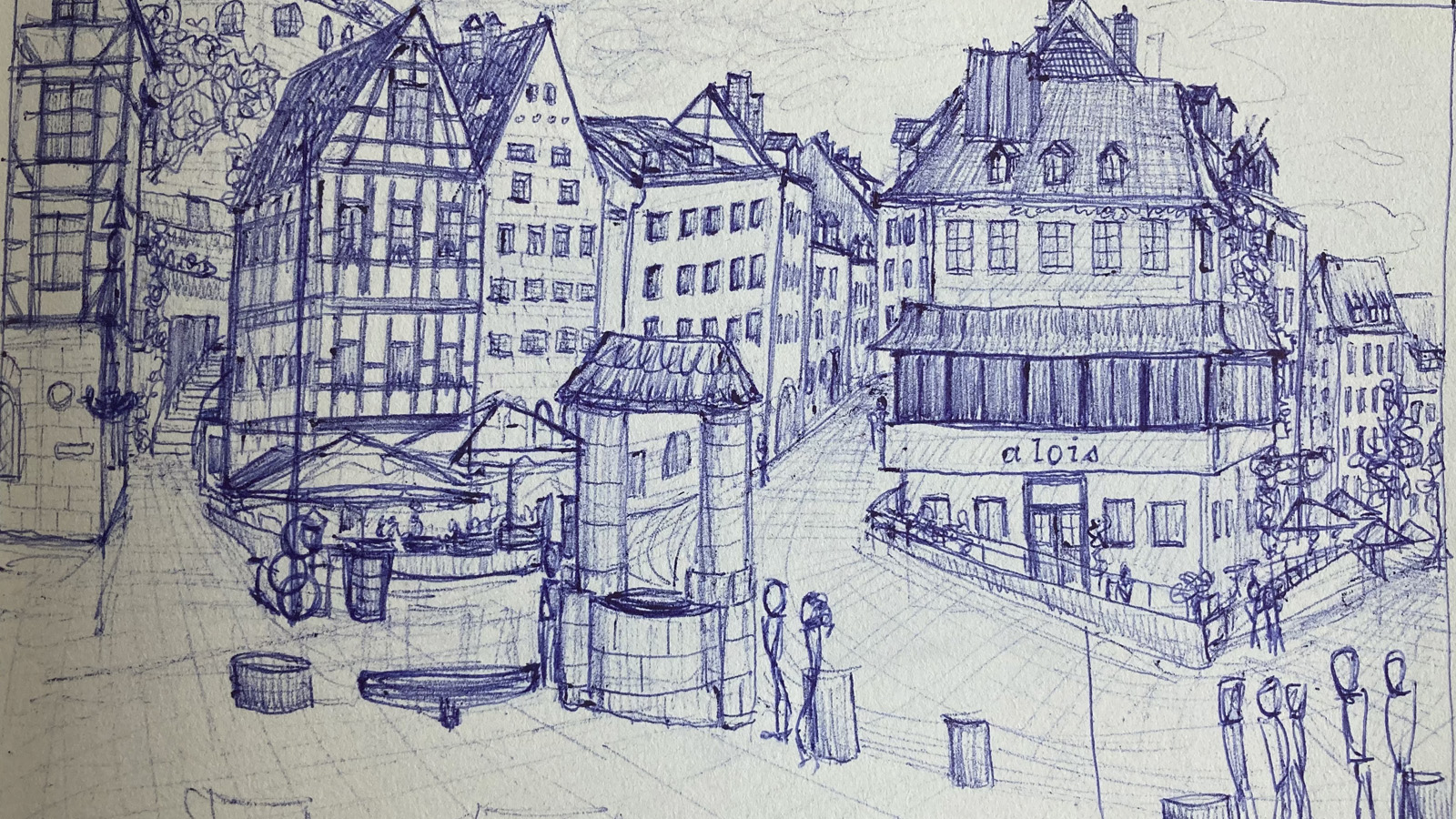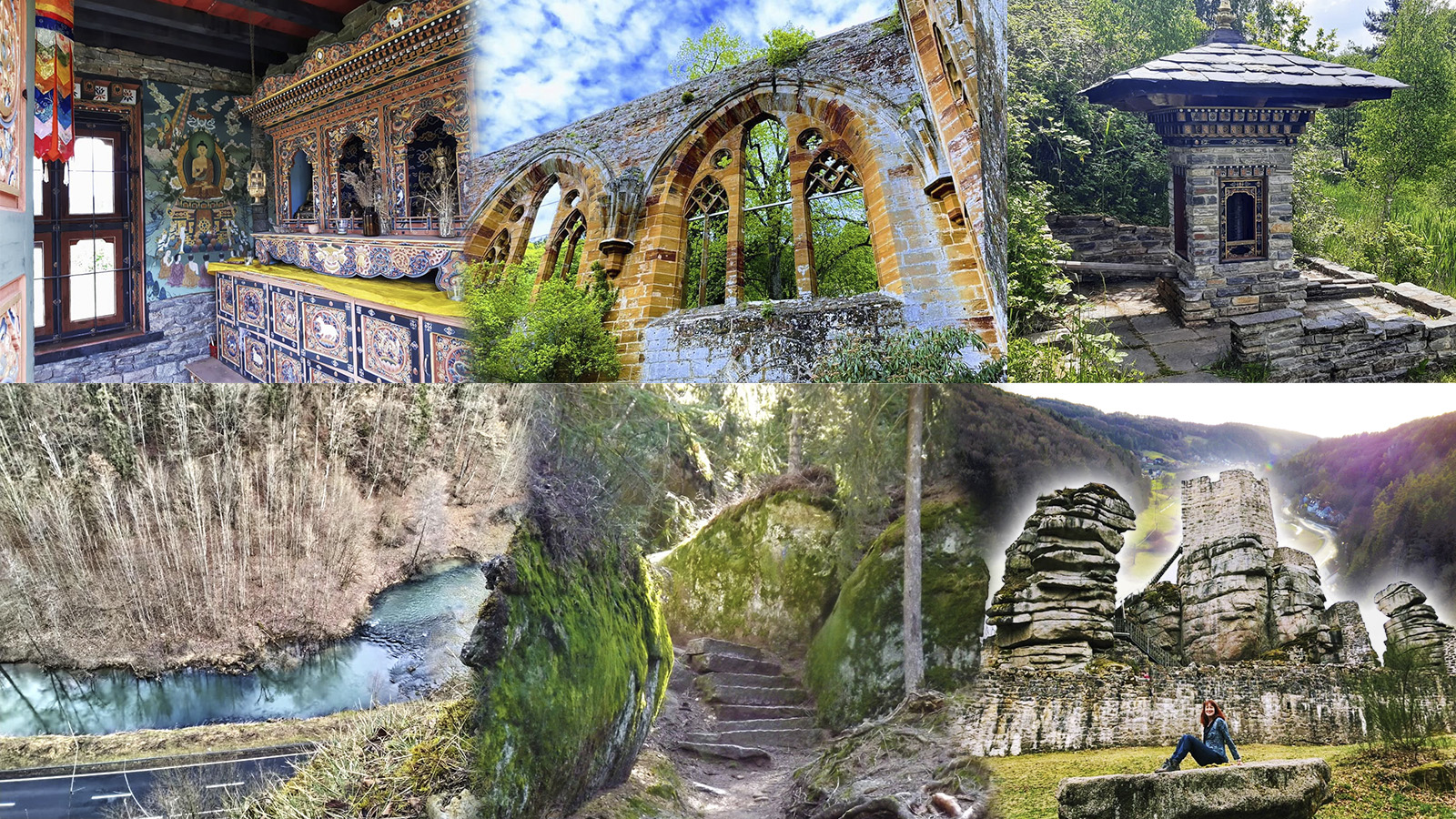Well, the lockdown isn’t over yet, but with the easing of restrictions, excursions to picturesque locations are possible. Why not take the chance to explore nearby places that have their own interesting stories and legends! Bamberg, just a short 45-minute train journey from Nuremberg, is a small and cosy city in Upper Franconia, which lies on the river Regnitz and atop seven hills – which often draws comparison to the seven hills of Rome! Almost every street here, with its traditional medieval buildings, gives you the opportunity to feel right at home in a small kingdom – only the dragons and knights in shining armour are missing! It’s no surprise that Bamberg’s old town is included on the UNESCO World Heritage list.
Walking along Upper Bridge (Obere Brücke), it is worth looking at one of the well-known spots, like Old Town Hall, with its view of the “Little Venice” fisherman’s village. You can also take a gander at Castle Altenburg, which proudly stands on the highest hill. It was first mentioned in 1109 and was used as a refuge and fortress. Then there’s the New Residence, a 17th century residence of Bamberg’s prince bishops, where you can enjoy rich interior decorations, the Old German and Baroque Gallery, and the breath-taking view of the Rose Garden.
But behind this romantic atmosphere is hidden a cruel witch-hunt history, a period of torture and executions running from 1626 to 1631 that took the lives of many victims. A Drudenhaus, or witch prison, was constructed especially for this purpose. Among different torture methods used were ice-cold baths, thumbscrews, flogging, iron-spiked stocks, force-feeding with salty herring and other horrible variants. During this persecution process, women, men, and children suffered alike, as well as ordinary citizens, regardless of their status. People who expressed sympathy or doubt on behalf of the victims became victims as well. Accusations were not public, and the suspected couldn’t get a legal defence. But after complaints from influential people, Emperor Ferdinand issued mandates against persecution, and the death of Bamberg’s ruler Prince Bishop Dornheim closed this mournful chapter.
As you can see, it isn’t strange that the city is shrouded in stories and legends. Some are related to the Bamberg Cathedral (Bamberger Dom), or connect to the Bamberg Horseman monument, one of the symbols of Bamberg. Who could that man be? There are a lot of different possibilities, but according to the latest version of the story, it’s likely King Stephen the First of Hungary. You can also learn about the tale regarding the creation of the Cathedral Toad Lions sculpture. To find out more about the Cathedral online there is information here in English:
https://sites.google.com/slu.edu/bambergcathedral/home?authuser=0
Near the Cathedral you’ll also find the Old Court, (Alte Hofhaltung) currently open as a Historical Museum of Bamberg, but previously served as a chancellery, library, and council chamber, and was a residence for bishops many centuries ago.
If you want to dig deeper and have a flashlight handy, you can explore the secrets of the underground catacombs (access only with an official tour) which are almost 12km deep; they are also an amazing sight to see dating back to the 11th century.
At the end of your visit, don’t forget to stop by the Franconian Brewery Museum and try some of Bamberg’s famous smoked beer (Rauchbier) before you hit the road!
Our Bamberg top 10 things to see and do.
- Walking Tour of the Old Town & Bamberg Town Hall
For individuals visiting Bamberg an audiovisual guide system is availble. Ideal for those who prefer to discover the town under their own steam, or those on a tight schedule who are unable to take part in a conventional guided tour. Bamberg’s histories are recounted in a colourful and interesting way using the technically innovative system with GPS guidance. - Visit the Bamberg Cathedral (Bamberger Dom St. Peter und St. Georg)
The cathedral dates from the 13th century and combines features of Romanesque and early Gothic styles. It is one of the most famous cathedrals of Germany. Inside you can see the tomb of Heinrich II and the famous “Bamberg Horseman” (“Der Bamberger Reiter”), a life-size stone equestrian statue whose identity could not be completely clarified until recently. - Explore “Little Venice” (Klein Venedig)
Bamberg’s Klein-Venedig (Little Venice) is a colony of fishermen’s houses on the River Regnitz dating from the 17th century. There you’ll find rows of small, picturesque half-timbered cottages once inhabited by fishermen and their families and which today serve as the backdrop for the annual Sandkerwa folk festival. It is a very romantic place and very nice to explore, especially on a non-rainy day.
- Tour the New Residence (Neue Residenz)
The New Residence, constructed between 1695-1704 by J. L. Dientzenhofer, served as the seat of Bamberg’s Prince-bishops until 1802. The show piece of the Residence is the magnificently furnished “Imperial Hall”, which is still used for events today. The State Library, a gallery and a museum are presently located here. - Stop by at the Rose Garden (Rosengarten)
The rose garden, located in the inner courtyard of the New Residence, smells as wonderful as it looks. Besides offering an incredible view over the city of Bamberg, during the flowering season (from May on through the summer) more than 4500 roses are on display here. - Try a glass of Rauchbier (smoked beer) and visit the Franconia Brewery Museum
Bamberg is known as Germany’s beer capital and is especially famous for its “Rauchbier”, which is a smoked malt black beer. Make sure you stop by Schlenkerla brewpub, which is a must-see destination and a great place to enjoy the “Rauchbier”. If you have a little more time we highly recommend that you take part in a guided beer tour or at least plan to stop at one of the breweries. The brewery museum is a must for anyone interested in learning more about beer. Find more information here: https://brauereimuseum.de/en/ - Enjoy the view from St. Michael’s Monastery
St. Michael’s (“Kloster Michaelsberg” or “Michelsberg”) is a former Benedictine monastery. After its dissolution in 1803 the buildings were used as almshouses of the “Vereinigtes Katharinen- und Elisabethen-Spital”, which still exists as a retirement home. The former abbey church remains in use as the Michaelskirche. The buildings are part of the UNESCO World Heritage Site Town of Bamberg. - Stop by the ETA Hoffmann’s House
The charming narrow house at Schillerplatz 26 in Bamberg is where the Romantic author, composer and painter E. T. A. Hoffmann lived from 1808 to 1813. It is now a museum, open daily (closed Mondays) from May 1st to November 1st. Opposite the house is the E.T.A. Hoffman theatre. - Visit a film set at the Old Courtyard
If you’re a film buff you definitely have to stop by at the Old Courtyard (“Alte Hofhaltung”). Here scenes depicting Paris in the blockbuster, The Three Musketeers, starring Orlando Bloom were filmed. Youtube video: https://www.youtube.com/watch?v=VSO9XYLkfMI - Trail of Modern Sculptures
The route of this public art trail follows a sculpture path leading to works of art from the 11th century to the present day. It reveals some of Bambergs most beautiful places, as well as hidden gems of the medieval and baroque historic centre. The sculpture trail starts and ends at the “Kunstraum Kesselhaus”. Find more information here:
http://thomas-michel-contemporary-art.de/bamberg-sculpture-path/?lang=en
Bamberg Welcomes Tourists Again
Once again Bamberg is allowed to welcome guests. Since several days the local 7-day incidence has remained below the 50 mark. An overview of everything that is already open in Bamberg or will reopen soon can be found here. Be aware that some venues listed may still be closed, and you may also need to book tickets in advance, even if entry is free. Provided you have time and you want to visit at least two or more attractions that otherwise require an entrance fee, it is worth buying the BAMBERGcard (€16.00). Valid for three days it includes an audio-guided tour of the city called “Fascination of a World Heritage Site”, admission to several museums and exhibitions (conditions may apply), as well as free travel on buses and trains in the Bamberg area. Please remember: A negative Corona test may be necessary when visiting museums and exhibitions and for many shops and cafés.
Hashtags: #bamberg #beer #franconia #travel #tourism #UNESCOworldHeritageSite
Resources
https://en.bamberg.info
https://www.bavaria.by/visit/bamberg
https://www.infranken.de/ratgeber/gruselgeschichten-in-bamberg-schaurige-orte-an-denen-hexen-untote-geister-teufel-spuken-art-3472148
https://witchcraftandwitches.com/witchcraft/trials-bamberg/
https://occult-world.com/bamberg-witches/
https://www.total-lokal.de/pdf/96047_info.pdf
https://www.agil-bamberg.de/stadtfuehrungplusbambergerstollenE.php


